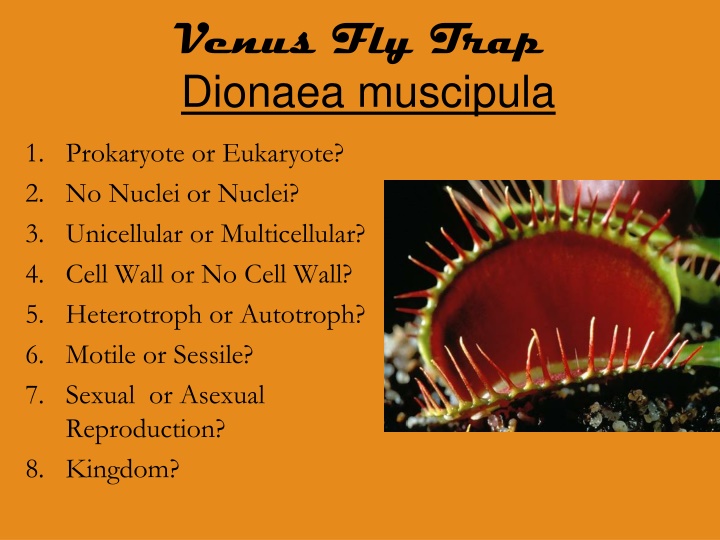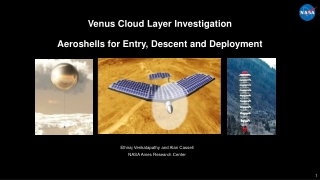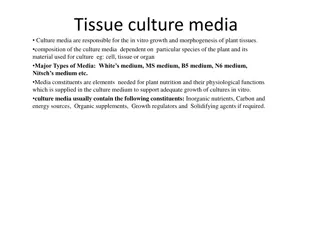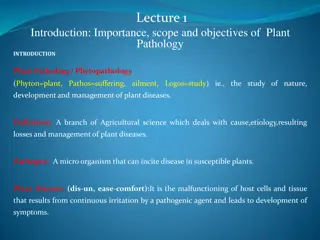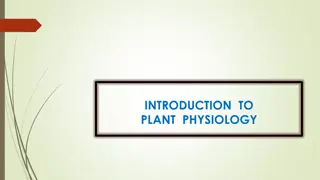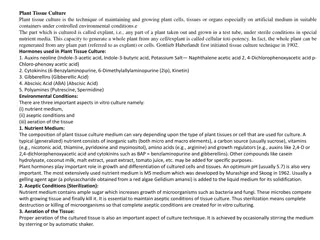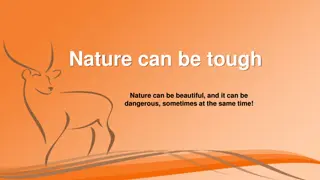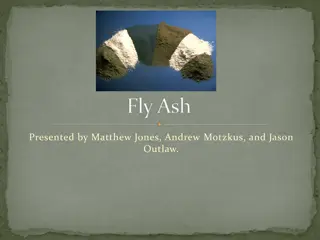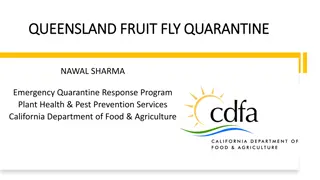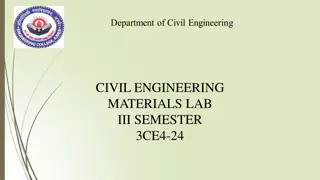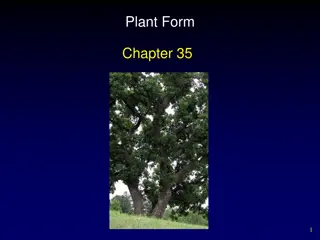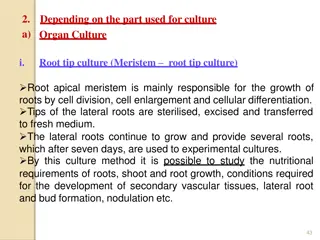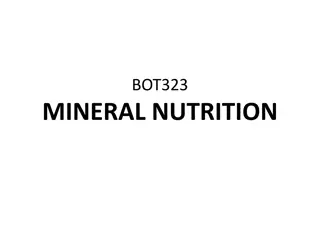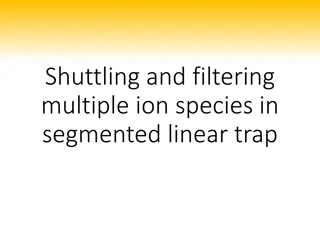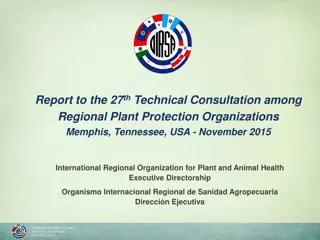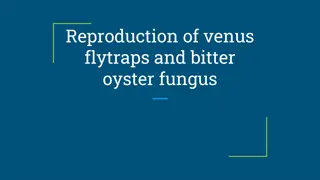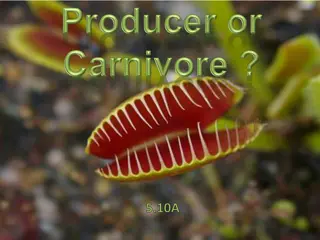The Fascinating Venus Fly Trap - A Carnivorous Plant
The Venus Fly Trap, scientifically known as Dionaea muscipula, is a unique carnivorous plant found in the southern swamps of the US. It is a eukaryotic, multicellular autotroph that thrives in poor, nutrient-deficient soils by capturing insects for essential nutrients like nitrogen. Its trapping mechanism involves specialized leaves that close upon insect stimulation, aiding in digestion. This plant's adaptation showcases a remarkable evolutionary strategy for survival.
Download Presentation

Please find below an Image/Link to download the presentation.
The content on the website is provided AS IS for your information and personal use only. It may not be sold, licensed, or shared on other websites without obtaining consent from the author.If you encounter any issues during the download, it is possible that the publisher has removed the file from their server.
You are allowed to download the files provided on this website for personal or commercial use, subject to the condition that they are used lawfully. All files are the property of their respective owners.
The content on the website is provided AS IS for your information and personal use only. It may not be sold, licensed, or shared on other websites without obtaining consent from the author.
E N D
Presentation Transcript
Venus Fly Trap Dionaea muscipula 1. Prokaryote or Eukaryote? 2. No Nuclei or Nuclei? 3. Unicellular or Multicellular? 4. Cell Wall or No Cell Wall? 5. Heterotroph or Autotroph? 6. Motile or Sessile? 7. Sexual or Asexual Reproduction? 8. Kingdom?
Venus Fly Trap Dionaea muscipula Eukaryote Nuclei in Cells Multicellular Cell wall Autotrophs (I ll explain) Sessile Sexual Reproduction Plantae
Venus Fly Trap Dionaea muscipula Located in poor soil in southern swamps of the US. These poor soil swamps have lots of water, but little nutrients and minerals that the plant needs specifically nitrogen.
Venus Fly Trap Dionaea muscipula Nitrogen is found in the air but only makes it into the soil in a form that plants can absorb when things die and rot.
Venus Fly Trap Dionaea muscipula In these southern swamps there is too much acid for decomposing fungi to survive and break down living things, so when things die they rot VERY slowly and give off little nitrogen.
Venus Fly Trap Dionaea muscipula Plants that live in these swamps need to get nitrogen other ways and carnivorous plants like the Venus fly trap do this by capturing flies and other insects.
Venus Fly Trap Dionaea muscipula The trap attracts flies with a rotting smell and red color simulating flesh that flies eat The movement of the fly stimulates rapid cell growth in the specialized leaves and the trap closes.
Venus Fly Trap Dionaea muscipula The trap doesn t close all the way at first, allowing insects that are too small to escape.
Venus Fly Trap Dionaea muscipula Then the trap closes and the plant releases digestive fluids, slowly eating the insect.
Venus Fly Trap Dionaea muscipula When finished, the trap reopens and rain or wind washes the skeleton of the fly away.
Similar Species-- Sundew Sundew plants use sticky sap to catch insects before they release enzymes to digest them and capture their nitrogen.
Similar Species Pitcher Plant Pitcher plants attract insects with scents and then the insects fall into a watery pool where they drown and then are slowly digested for their nitrogen.
